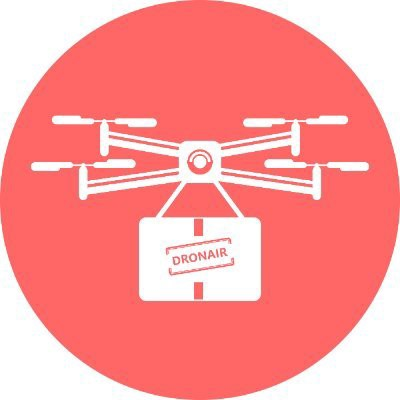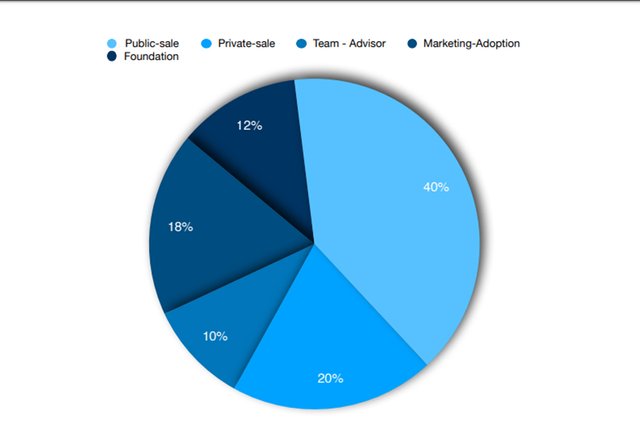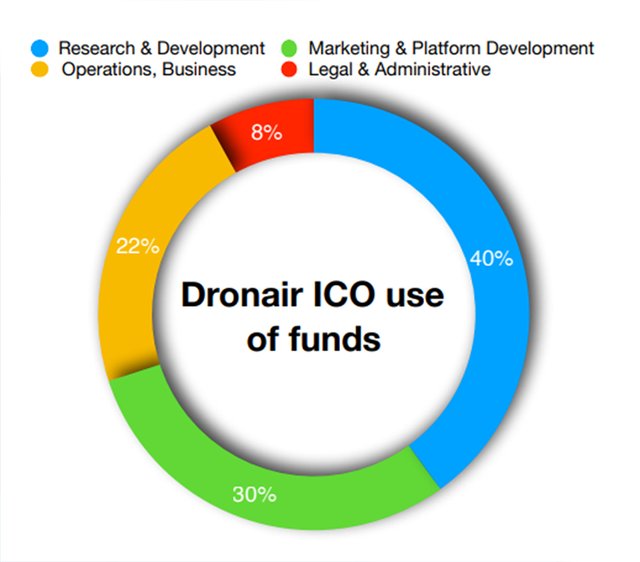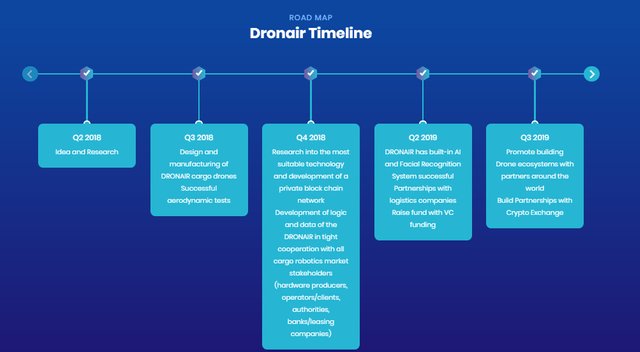Fast, Reliable and Affordable Physical Goods Delivery Service

About
Drones are airplanes or flying gadgets that do not have human pilots available locally. Officially named unmanned aerial vehicles (UAVs), a drone can be flown independently by a ready-to-use PC or via remote control by a human pilot. Drones started in the military and were used for missions that were considered dangerous for people. Despite the fact that the drones have a military beginning, the use of these gadgets in different business, logical, recreational, rural, and applications continues to develop. To be honest, according to 2015 figures, there are currently more people babbling than military drones.
Drone innovations are always developing because of new advances and enormous speculation bringing further developed drones to the market such as the hands of a clock. Underneath, we examine UAV innovations on existing mainstream rambles, which have all the latest drone innovations. Most drones will have the same fundamentals as a consolidated framework. Unmanned aerial vehicles include everything from streamlined drone features, materials in physical UAV assembly, to circuit loads, chipsets and programming, which are the thoughts of drones.
At Dronair, we make aeronautical records and reports based on our last age drones or UAV’S or Uninterrupted Cereal Vehicles. Equipped with high aim cameras and overseen by highly competent experts, they allow you to get photos and recordings with the best accessibility. This framework is monitored from the very beginning as a customer, you can catch up on the status of your report or subtle videos at any time, as well as choice edges, angles, heights and areas through our ground-based screens.
DRONAIR Cargo Robotics Has A Built-in AI and Face Recognition System. The best part of DRONAIR is the recognition of the face and the power of the artificial brain, allowing you to utilize highlights that allow a circle of drones around you and to follow you. It can even take great client photos by looking at examples and facial structures.
The DRONAIR Operations Platform will provide problematic answers to turn coordination efforts around the world into unmanned frameworks. As a free Blockchain-based Operating Platform that is open to all industry members, this platform will contain basic data for each phase of the transport robot’s life cycle. We call it DRONAIR. Activities and access to DRONAIR customers will be used to create and test the blockchain. We intend to establish measures for new business in mechanical conveyance in the region, for example, financing, fabrication, activities, maintenance, protection, and approval of drones and robots that are seen around, on land and at sea.
Examples of How Drone Delivery Works:
- Scenarios: long-distance shipments arrive from out of town and are sorted in warehouses, separated automatically based on certain criteria, drones then collect packages from the conveyor belt for shipping. The smartphone and GPS application allows customers to place orders and track shipments.
- Another scenario: DRONAIR sits on a delivery truck, waiting for a parcel from the driver; the barcode on the parcel is scanned by the drone, then uses GPS to fly to the destination. After that, the drone is connected to the truck, refills the battery, and prepares for the next shipment.
DRONAIR has AI and the default Face Recognition System
The best aspect of DRONAIR is facial recognition and artificial intelligence, allowing you to use features that allow drones to orbit around you and follow you. Even to take photos of customers by recognizing facial patterns and structures.
The exclusivity of the DRONAIR service operations – the world’s first heavy industrial cargo drone. This is a fundamentally new drone vehicle with a gasoline-powered hybrid engine that outperforms the existing drone solution. It can take off and land vertically and has a very high useful payload of up to 400 kg / 880 lbs and exceptional flying range of up to 350 km / 220 miles.
DRONAIR is suitable for various market segments, including logistics, agriculture, and fire fighting. Already have a client that will allow DRONAIR to develop a new unmanned logistics business process. That the client will also make a transaction to be executed at DRONAIR. DRONAIR IP and how to protect it fully.
The drone market (cargo robot) will grow rapidly in the consumer, commercial and military sectors. In its 2016 report, Goldman Sachs estimates that drone technology will increase to reach a total market size of $ 100 billion between 2016 and 2020.
Although 70% of this figure will be attributed to military activity, commercial business represents the fastest growth opportunity, projected to reach $ 13 billion between 2016 and 2020.
PWC estimates that commercial applications have a total address of $ 127 billion globally. $ 100 billion – is a service market size for DRONAIR in agriculture, logistics and infrastructure. Drones are expected to be part of daily operations across industries as diverse as insurance, agriculture, and journalism.
The consulting company BCG estimates the drone industry fleet in Europe and the US will be $ 50 billion by 2050 and more than 1 million units, with most of the value related to drone services and data.
According to market research from Gartner, the market size for commercial drones in Indonesia in 2016 was $ 2.8 billion with only 110,000 million units sold. In 2017, commercial sales are estimated to grow by around 60% and reach 170,000.
While private unit sales drones dominate 94% of the market, they only comprise 40% of the revenue sharing market. Commercial drones only represent 6% of the market, but the price is around $ 100,000 projected to represent 60% of industry revenue.
How it works?
There are no requirements for large trucks, drivers to manage them, costs and road passes, annual DOT costs, lots of fuel, tires and chains, and so on. While our basic costs are quite large, our work costs are an absolute minimum. The reserve funds are given to our clients. The independent transportation administration that we manage significantly reduces transportation time. This is extremely fast by any model because the cargo moves from point A to point B as opposed to a long and winding road. What’s more, Dronair operates all day, every day / 365 and free of area.
The Dronair Operations Platform is the first stage of business-based B2R (business-to-robot) blockchain that is comprehensively relevant in all parts of the payload mechanical autonomy industry that it creates. Initially it will be created and tested using a main mechanical transport air robot, the DAIR ramble, which will also provide Dronair moment access to its customer base to advance the form of unmanned business. Later all other unmanned cargo frameworks: visible around, on land and in the ocean will be linked to Dronair. The main criticism from our clients in the oil and gas industry confirms that if they change from helicopters to ramble loads, they can supply rigs on land at a cost of 5 to several times cheaper.
Rural areas in general will have a disadvantaged foundation and may be increasingly difficult to reach by traditional transportation strategies. Submission by Dronair can overcome this problem, providing residents of the territory of the country with everything from web-based shopping orders, to crisis recovery supplies. Dronair can be reduced, and eventually replaced, complex procedures currently arriving in country zones, for example, vehicles, pontoons, and postmen.
The fundamental reason for Dronair is to coordinate data for all market members and arrange intelligent implementation agreements for exchange. Exchanges may differ in value and repeatability. The stage will collect a commission from each exchange. All exchanges will be paid in USD or other fiat money but executed in a framework that uses DAIR tokens.
The best part of DRONAIR is its face recognition and man-made awareness, allowing you to use highlights that allow drone circles around you and tail you. It can, even take extraordinary photos of clients by looking at examples and facial structures. The limitation of the DRONAIR reshuffle activity is the first overflow and mechanical burden. This is a generally new drone vehicle with a gas-powered crossover motor that exceeds the existing drone settings.
It is equipped for vertical take-off and landing, and has very high-value piles of up to 400 kg / 880 lbs and exceptional flying coverage of up to 350 km / 220 miles. DRONAIR matches many market fragments, including coordination, horticulture, and fire fighting to give examples. Until now it has customers who will allow DRONAIR to grow new business procedures from unmanned coordination. The customer will also get an exchange to be executed at DRONAIR. DRONAIR IP and capabilities are fully secured.
DRONAIR Operating Platform Technical and economic details.
Blockchain concept for DRONAIR
Dronair’s architecture is based on two building blocks:
- Dronair blockchain itself – allowable private blockchain that is adapted for the most effective use in the industry.
- Ethereum ERC-20 DAIR perimeter is based on a public blockchain to process and complete DAIR token transactions and communicate them back and forth with Dronair. Personal blockchain (permitted) is needed to simplify development and support and provide opportunities to choose the most appropriate solution for each specific task. In addition, we want to be independent of public network performance (eg scalability issues with Ethereum) and not wait for transactions to be made on the public network. We are currently considering three different approaches to Dronair: making our own Ethereum fork, a special Dronair platform, built on the Exonum library or an instance of the Corda R3 blockchain. All tokens issued on the public Ethereum network at the ICO stage are compatible with ERC-20 and can be bought and sold on the stock exchange. So we store it on the public Ethereum network. At the same time, this same token will be used as a kryptonomic fuel for the permitted Dronair, so it is important to synchronize balances between the Ethereum and Dronair public networks.
Synchronize DAIR Tokens
The DAIR token is the currency for all operations in Dronair. All contracts are processed in DAIR tokens. Although tokens are issued on public Ethereum networks, tokens are also fully used on Dronair. There are several options for synchronization. Using Ethereum public network transactions is an obvious way, but it locks Dronair’s performance due to different transaction speeds.
In addition, the additional costs of operating the Ethereum public network can damage large benefits. Create an additional “internal token” as an alternative. This approach will dramatically increase the complexity of the system because it depends on the synchronization process which consumes resources between internal and external balance.
Storage and token issues that balance reconciliation between Dronair and the public Ethereum Network are resolved using payment channels and maintaining the balance of the Ethereum public network. There are already several payment channel implementations. And under the auspices of the evolution of the Plasma project, parallel transaction execution and most of all scalability issues will be discussed.
Token DAIR – Token internal DRONAIR
Dronair uses the DAIR token utility
DAIR’s properties include:
• An internal Dronair token is required for each transaction,
• A fixed number of 140,000,000,000 tokens,
• 25% of the transaction fee is given to all token holders,
• 25% of transaction costs are given to the Community Development Fund to maintain the constant development and expansion of the system.
Distribution

140,000,000,000 DAIR tokens will be distributed as follows:
Group A:
40% Public Sales will be allocated for sales (Public Sales phase). DAIR that is not sold will burn.
Group B:
20% personal sales will be allocated for sales (Personal Sales phase).
Group C: Team – Advisors
20% will be allocated to the Dronair team (this will be locked initially and transferable every month for 5 years) and will be allocated for advisory, security and operational purposes.
Group D: Marketing – Adoption of
18% will be allocated to develop partners and communities to encourage participation.
Group E: The 12% foundation will be located in the Dronair Foundation
Token Management
Use of Treasury
DAIR stored by the Company in reserves will be used to support the Company’s growth. This DAIR reserve will add 5% of crowding sales allocated to the Ministry of Finance to ensure there is no disruption in platform use due to volatility in the supply and demand of tokens.
Not sold DAIR
All DAIR unsold during Public Sales will be burned by a Smart-contract.
Token Management
The Dronair team will apply the amount allocated to the Ministry of Finance to ensure the smooth running of the system and no one is closed and cannot use the service due to the unavailability of tokens.
Use of funds
Project funds will be used to:
- 40% – Research & Development – including salaries, contractors, full time research.
- 30% – Marketing & Platform Development – to build strong marketing campaigns in several languages, user acquisition, etc.
- 22% – Operations, Business and Corporate Development – to grow the business through strategic partnerships, integration with various stakeholders, and obtaining or partnering with other related projects.
- 8% – Legal & Administrative – Legal, IP protection, accounting and other third party services needed to run our organization.

ROADMAP

Team and Advisors
Liam Thomas – Founder & CEO
Kane Brown – Co-Founder
Laura Moore – CMO
Ilya Alarico – Lead IT Developer
Julia Martin – Investment Manager
Tom Mccarthy – Chief PR Advisor
Dylan Smith – Chief Business Advisor
Daniel Jones – Chief Blockchain Advisor
Luke Brown – Chief Technical Advisor
anonymous – Market Advisor
For More Information Click Links Bellow:
- Website: https://dronair.io/
- White paper: https://dronair.io/WhitePaper-Dronair-PDF.pdf
- Telegram: https://t.me/DronairProject, https://t.me/dronaircommunity, https://t.me/DronairBounty.
- Twitter: https://twitter.com/dronair_project
- Medium: https://medium.com/@dronair_project
Author
Bitcointalk username: KHAN SHIQ QHEIL
Bitcointalk Profile: https://bitcointalk.org/index.php?action=profile;u=2550289
Telegram Username: @KHANSHIQQHEIL
ETH Address: 0xa809395b84354d256302D97d5C68AaEE9EF84005
Tidak ada komentar:
Posting Komentar